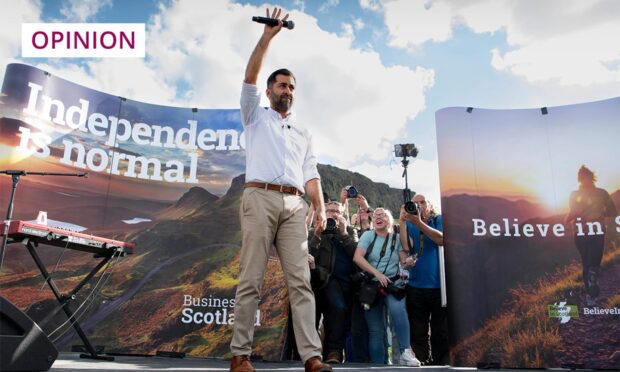According to many political pundits and analysts, the SNP ’s prospects at the next general election are drear. The party is on the slide, and there is little the leadership can do to prevent an inexorable descent from its current position of power.
Labour, it is claimed, is about to end the Nationalists’ dominance. Last month’s by-election result at Rutherglen and Hamilton West appears to confirm this view, they say. Or does it? Is this really the beginning of the end of the SNP’s 16 years dominance of Scottish politics? I don’t think so. As Mark Twain once said about newspaper stories: “Reports of my death have been greatly exaggerated.”
Let’s look at the facts. No one can deny that the party is down in the polls from the heady heights of just a couple of years ago. Yet, the most recent poll still has it well ahead among voters across Scotland, and actually shows an increased lead over Labour compared with previous polls. The SNP’s figures were up, while Labour’s were down. In reality, Labour’s Scottish resurgence seems to have stalled, and the SNP looks to be clawing back some of the lost ground.
And look at the detail of the Rutherglen result. First, it was an incredibly low turnout, with Labour actually winning fewer votes in victory than it did when losing the seat at the last general election. And many of the votes the party did receive appear to have come from the Conservatives, who lost their deposit after their vote collapsed.
SNP supporters do not seem to have switched to Labour; they simply didn’t turn out to vote. And that had more to do with local circumstances – the previous MP Margaret Ferrier, remember, was forced to resign in disgrace after breaking Covid regulations – than any disillusionment with the SNP as a whole.
The FM shone bright at SNP conference
According to the most recent poll, if a general election was held now, the SNP would win 38% of the vote – an increase of 2% – while Labour would have 27%: a fall of five points from the month before. Not exactly Labour on the way back. Indeed, such a result, with the party holding a healthy 11-point lead, would leave the SNP with by far the most Scottish seats at Westminster.
And this poll was conducted just before the SNP’s recent annual conference in Aberdeen. It was, admittedly, a relatively low-key affair, until First Minister Humza Yousaf’s keynote speech.
His highly personal and emotive analysis of the situation in Gaza and Israel lit up the conference, and was far superior to anything we have heard before or since from the leaders of the main UK parties.
He also managed to grab the headlines with his unexpected announcement of a council tax freeze. This may have proved somewhat controversial in some quarters, but it has been warmly welcomed by the overwhelming majority of voters.
Humza Yousaf still has time on his side
In addition, Mr Yousaf has dumped Nicola Sturgeon’s previous road map to a second referendum, and won backing for a new plan to use winning a majority of seats at the next general election – a pledge which will form part of the party’s manifesto – as a basis for the right to hold such a vote. It gives independence-supporting activists a positive reason to campaign and, if successful, would leave whichever UK party wins power with awkward questions to answer about the denial of democracy, if they were to refuse a victorious party the right to implement a manifesto pledge.
Some of the more contentious policies on which the SNP have campaigned recently, many of them thanks to the coalition with the Greens, such as Highly Protected Marine Areas and the ill-thought-out bottle return scheme, have either been dropped or have been blocked.
Support for independence remains unmoved at 48 or 49%, so there are plenty of ‘soft’ supportive votes for the SNP to mop up
Remember, too, that a general election is probably around a year away, so the new first minister has at least 12 months to establish himself properly and put clear water between his administration and that of Nicola Sturgeon.
Leaving aside party voting intentions, support for independence remains unmoved at 48 or 49%, so there are plenty of “soft” supportive votes for the SNP to mop up. Humza Yousaf still has time on his side, and, like Mark Twain, reports of his imminent demise are somewhat exaggerated.
Campbell Gunn is a retired political editor who served as special adviser to two first ministers of Scotland, and a Munro compleatist


Conversation